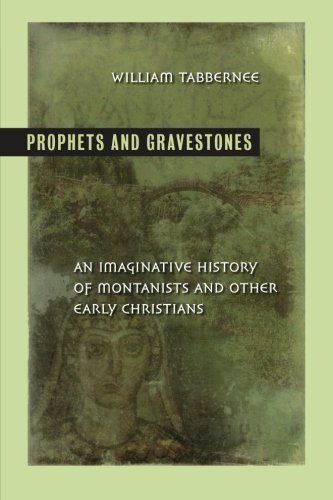
Prophets and Gravestones An Imaginative History of Montanists and Other Early Christians
Before the great councils of Christendom and before there were centers of ecclesiastical authority that spoke on behalf of the widely scattered churches found throughout the Roman Empire, how was one to determine what teachings were true and which prophets and prophetesses were authentic? Montanism is named for its first proponent, a certain Montanus from Phrygia in Asia Minor in what is today Turkey who began his "spirit-filled movement" within the area sometime around 165 CE. He was shortly joined by two women, Priscilla and Maximilla. All proclaimed that they were filled with the Holy Spirit and prophesied about the return of Jesus Christ as immanent and that the New Jerusalem would be established in the city of Pepouza in Phrygia. With his profound knowledge of the group known at that time as "The New Prophecy" William Tabbernee dramatically tells the story of the followers of Montanus, Maximilla, and Priscilla, as well as of those other Christians, some well known such as Tertullian, most not, who followed their teachings for centuries thereafter. Replete with vivid descriptions, photographs of, and drawings illustrating the places and events surrounding these men and women, and with maps to orient the reader in the geography of its origins, this book provides an articulate, erudite, and thoroughly fascinating tour-de-force of what has been labeled a Christian heresy almost from its inception. Professor Tabbernee has prepared a series of study questions for each chapter of this engaging book. These questions are suitable for use in a variety of settings, including book clubs, discussion groups, and formal undergraduate and master's level courses. While they are copyrighted they have been made available without cost and can be downloaded to your computer as a PDF file from the book's web page on Baker Academic's site.